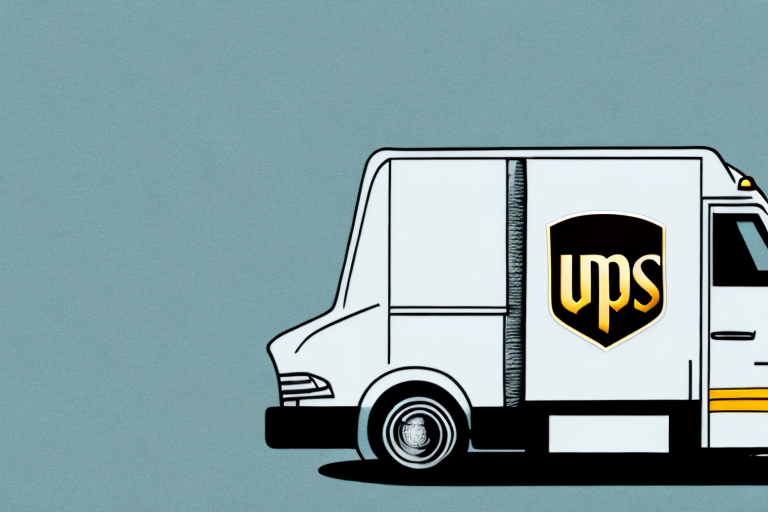Understanding Shipping Rates from UPS
When shipping packages through a courier service like UPS, understanding the shipping rates is crucial. UPS rates depend on various factors, including the size and weight of your shipment, the shipping service selected, and the destination of your package. This article provides an in-depth analysis of how UPS shipping rates are calculated and offers strategies to help you save money when shipping with UPS.
How UPS Shipping Rates Are Calculated
UPS calculates shipping rates based on the weight and dimensions of your package, the destination, and the chosen shipping service. For domestic shipments within the United States, UPS primarily offers two types of shipping services: UPS Ground and UPS Air. UPS Ground is typically the most cost-effective option, ideal for packages that are not time-sensitive. In contrast, UPS Air provides faster delivery, making it suitable for time-sensitive shipments. The cost also varies based on the selected transit time or shipping speed.
Additionally, UPS factors in the distance between the origin and destination of your package. The farther your package needs to travel, the higher the shipping cost. UPS employs a zone-based system to calculate shipping costs, with prices varying depending on the specific shipping service and the zones involved.
Factors That Affect UPS Shipping Rates
Several key factors influence UPS shipping rates. Understanding these can help you better estimate and manage your shipping costs:
- Package Weight: Heavier packages generally incur higher shipping costs.
- Package Dimensions: Larger packages can be more expensive to ship due to dimensional weight calculations, which consider both size and weight.
- Shipping Service: Different services, such as UPS Ground or UPS Air, have varying costs based on speed and delivery guarantees.
- Destination: Shipping longer distances typically increases costs.
- Transit Time: Faster delivery options usually come at a higher price.
How to Get Accurate UPS Shipping Quotes
To obtain an accurate quote for your UPS shipment, you can use the UPS shipping calculator available on their website or mobile app. By inputting the weight, dimensions, and destination of your package, UPS provides a quote based on the selected shipping service, allowing you to compare different options for cost-effectiveness.
Alternatively, contacting a UPS representative directly can offer personalized assistance. Representatives can help you choose the best shipping service, determine accurate shipping rates, and provide packaging guidance. For frequent or high-volume shippers, opening a UPS account might be beneficial, granting access to discounted shipping rates and additional services.
Comparing UPS Ground vs. Air Shipping Rates
When deciding between UPS Ground and UPS Air, it's essential to understand the cost differences. UPS Ground is generally more affordable and suitable for non-urgent packages, while UPS Air offers faster delivery at a higher cost. Within UPS Air, options like UPS Next Day Air and UPS 2nd Day Air provide varying levels of speed and pricing to meet different needs.
How to Save Money on UPS Shipping Rates
Here are proven strategies to reduce your UPS shipping costs:
- Compare Shipping Services: Evaluate the costs of different UPS services to identify the most economical option for your needs.
- Use Discounted Rates: Consider opening a UPS account for access to discounted shipping rates, especially beneficial for frequent or bulk shippers.
- Optimize Packaging: Use appropriate and size-efficient packaging to avoid dimensional weight charges and reduce costs.
- Prepay and Add: Utilize the 'prepay and add' method to receive discounts on standard shipping rates.
- Consolidate Shipments: Combine multiple shipments into a single larger shipment to take advantage of bulk shipping discounts.
Understanding UPS Dimensional Weight Pricing
UPS employs dimensional weight pricing to calculate the cost of shipping large but lightweight packages. This method considers both the size and weight of the package, meaning that a large, lightweight package may be charged at a higher rate than its actual weight. To minimize these charges, choose packaging that fits your items snugly and keeps the package weight as low as possible.
Tips for Negotiating Lower UPS Shipping Rates
If you ship large volumes with UPS, you might be able to negotiate lower shipping rates. Follow these tips to enhance your negotiation strategy:
- Prepare Your Shipment Data: Gather data on your current shipping volumes, costs, and future shipping projections.
- Explore Alternative Solutions: Research other shipping options to understand the competitive landscape before negotiations.
- Leverage Your Data: Use your shipping data to demonstrate your value and negotiate better rates.
- Consider Alternative Pricing Models: Be open to volume discounts or pricing based on specific delivery routes or destinations.
Common UPS Shipping Mistakes to Avoid
Avoid these common mistakes to ensure efficient and cost-effective UPS shipping:
- Using Incorrect Packaging: Choose appropriate packaging to prevent unexpected shipping costs due to dimensional weight charges.
- Inaccurate Weighing and Measuring: Ensure accurate weight and dimensions to avoid incorrect shipping costs.
- Neglecting Shipment Tracking: Always track your shipments to verify timely and correct delivery.
- Ignoring UPS Tools and Resources: Utilize UPS's available tools and resources to optimize your shipping process and costs.
How to Track Your UPS Packages and Shipments
Tracking your UPS packages and shipments is straightforward using the UPS website or mobile app. Enter your tracking number to receive the latest updates on your package's status. UPS also offers additional tracking features, such as delivery notifications via email or text message, ensuring you stay informed throughout the shipping process.
Understanding the Different Types of UPS Shipping Services
UPS provides a variety of shipping services tailored to different needs. Here are the primary UPS shipping services:
- UPS Ground: A cost-effective option ideal for non-urgent shipments requiring reliable delivery.
- UPS Air: Offers faster delivery options for time-sensitive shipments.
- UPS International: Services like UPS Worldwide Express and UPS Worldwide Saver cater to international shipping needs.
- UPS My Choice: Allows customization of delivery preferences, including date, time, and location, providing flexibility if you're unavailable to receive packages.
International Shipping with UPS: What You Need to Know
When shipping internationally with UPS, consider the following:
- Customs Documentation: Provide accurate customs documents detailing the contents and value of your shipment to avoid delays or additional fees.
- Shipping Restrictions: Verify any restrictions on items you intend to ship, as different services and destinations may have specific limitations.
- Shipping Destinations: Ensure the availability of UPS shipping services for your intended international destinations.
The Benefits of Using a UPS Shipping Calculator
A UPS shipping calculator is an essential tool for estimating shipping costs. By inputting your package's weight, dimensions, and destination, you can compare the costs of various shipping services to select the most economical option. Additionally, UPS offers tools like UPS My Choice, which allows you to personalize delivery preferences, further optimizing your shipping experience.
Understanding Your Options for Packaging and Labeling with UPS
UPS provides a range of packaging and labeling options to ensure your shipments are secure and meet shipping requirements:
- Pre-Labeled Packaging: Ready-to-use packaging with pre-printed labels for convenience.
- Custom Packaging: Tailored packaging solutions for specific shipping needs.
- Specialty Packaging: Designed for fragile or sensitive items to ensure safe transit.
UPS also offers various labeling options, including printed and electronic shipping labels. Selecting the appropriate packaging and labeling options helps prevent unexpected shipping costs and delivery delays.
How to Handle Lost or Damaged Packages with UPS
If your package is lost or damaged during transit with UPS, follow these steps:
- File a Claim: Submit a claim to UPS promptly if your package is lost or damaged. The claims process varies based on the shipment type and package value.
- Provide Documentation: Include necessary documentation such as the shipping label, proof of value, and a description of the lost or damaged items.
- Work with UPS: Collaborate with UPS to resolve the claim. If approved, UPS may reimburse you for the lost or damaged items or provide a replacement shipment.
Understanding UPS shipping rates and processes enables you to make informed decisions, optimize your shipping costs, and ensure your packages arrive safely and securely.




















